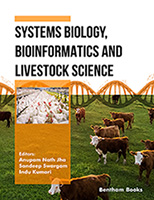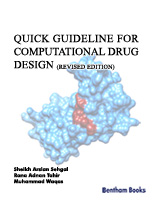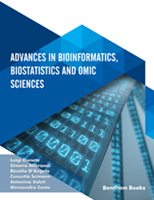The discussion of the bulk amount of informational data in biological sciences is still an understatement. The bioinformatics studies are being practiced in all over the world by universities, scientific groups, international and national companies and consortia, and it would not be underestimating if bioinformatics will be thought of as bedrock of future biological sciences. Bioinformatics evolved into complete interdisciplinary science to solve the biological problems by utilizing statistical, mathematical and computational approaches. Furthermore, the recording, annotation, storage, analyses, and searching/retrieval of biological information and representing this concluded information in order to understand various pathways, to educate ourselves, to understand biological processes in disease and healthy states, and also find potential drugs are only some aspects of bioinformatics. The conjuring of new ‘Big-Data’ associated typically with enormous databases of protein/gene sequences, and functional/structural information into which novel proteins and genes sequences are constantly deposited, can easily be searched by remote computer access with already known sequences. Numerous bioinformatics tools are freely available on the Internet to whoever wants to utilize them and it is impossible to list them all. The ability to collect, save, annotate, analyze, and distributes the biological information retrieved from sequencing and functional analyses is significant for modern biology. This is the reason behind the wide spread belief that the long run significance of bioinformatics approaches lies not much in the available tools, but in the annotation of data and concluding logical information that bioinformatics delivers for the improvement of life sciences.
Bioinformatics is to solve the biological problems with advanced computational manners by applying statistical and mathematical approaches. Structural bioinformatics is to predict and analyze 3D structures of macromolecules while Computer aided drug designing (CADD) helps scientists to design effective active molecules against diseases. However, the concept of structural bioinformatics including CADD is still hard to grasp for students and even more for educated laymen.
As a beginner, I fall into the first category with regards to this subject. Indeed, I first learn all these guidelines and tools for myself; in order to learn new emerging trends and approach my work with greater awareness about computational skills in biological problems. I felt that I need better insight into the CADD to achieve and improve the drug designing to reduce the time phase and resources. When I consulted the literature on this topic, I found that although there are many papers and books on the subject, the exact step by step working of basic tools and thorough analyses of generated results that I was looking for were scattered throughout them. I then began taking notes, and when I was finally satisfied, I discussed this with my colleague and a good friend (Rana Adnan Tahir). We realized after organizing the data in a suitable presentation, that it was potentially interesting for students and new learners to have visually detailed step by step working of tools and identify a lead compound. We believe that a better understanding of these concepts requires a more satisfactory verbal explanation than is visually provided, since, in our opinion, a visual step by step approach is the one closer to the understanding capability of non-experts and even for our own students. This is why this book is focused on providing a visual account and step by step guideline to identify a lead compound by computational means. In this sense, we deem that, besides the verbal working of tools, a visual step by step explanation can be very useful regarding designing of the compounds for the people who do not have a full understanding of it yet. Thus, we eventually came up with the present work, targeted to students and non-experts who are specifically interested in this domain and have a basic knowledge of structural bioinformatics.
With this book, we attempt to show the step by step working of basic tools for drug designing wherein analyses of generated results is always a priority. The protein sequence of RASSF2 was retrieved from UniProt and primary sequence analyses, secondary structure prediction and 3D structure prediction was performed followed by molecular docking studies. The basic information about bioinformatics and utilized tools is summarized in the first chapter. The book is summarized just as we wish we had been taught the core concepts and the working when we were first introduced to it. Therefore, we hope that it can be helpful as a guideline for drug designing by in silico approaches. The main text of the present work aims to demonstrate the step by step visual demonstration of the basic tools of structural bioinformatics and also is focused on the scientific point of views. If a beginner retrieves a protein sequence and performed all the steps described visually in this book will not only learn the computational drug designing but also can generate a publishable data.
Sheikh Arslan Sehgal
Department of Biosciences,
COMSATS Institute of Information Technology,
Sahiwal, Pakistan
State Key Laboratory of Membrane Biology,
Institute of Zoology; Chinese Academy of Sciences,
Beijing, China
University of Chinese Academy of Sciences,
Beijing, China
ACKNOWLEDGEMENTS
We would like to acknowledge our students Zunaira Khalid, Sonia Kanwal, Naima Javed, Tassaduq Hussain Jaffar, Bilal Chaudhry, Nadeem Amin, Sumaiya Fatima and Azka Ahmed for their help in completing this project. The authors are also grateful to the Department of Biosciences, COMSATS Institute of Information Technology, Sahiwal, Pakistan for encouraging and providing the platform.
Sheikh Arslan Sehgal and Rana Adnan Tahir acknowledge their good friends Sajjad Ahmed Larra and Muhammad Sohail Raza for their kind support in preparing this book. Sheikh Arslan Sehgal acknowledges Dr. Ashir Masroor who becomes the ignition in this project.
CONFLICT OF INTEREST
The authors declare no conflict of interest, financial or otherwise.
DEDICATION
"Thanks to ALMIGHTY ALLAH (GOD),
for the gift of writing he gave me".
S.A. Sehgal.
I know, you read many books in your life and you flip to the dedication page and find that the author has dedicated the book to someone else, not to you because the authors of those books were not your sons. But, in this book your son is the author and dedicating this book to you. I dedicate this book to my Father, Muhammad Ashraf Sheikh, who took me to the school for education, who always encouraged me to read books, and helped me transform into the person that I am.
To my Mother, Naeema Ashraf Sheikh, who always made delicious food for me.
To my Wife, Nisha Arslan Sehgal, whom I got married at the time of finalizing this book and spend more time on the laptop and she showed patience when her husband was working on weekends while on vacations too.
To my Brother, Babar Ashraf Sheikh, who made me an author, and always listened to my all stories from childhood uptil now.
To my Father-in-law, Chaudhary Muhammad Akram, who loves me a lot.
Sheikh Arslan Sehgal
Department of Biosciences,
COMSATS Institute of Information Technology,
Sahiwal, Pakistan
State Key Laboratory of Membrane Biology,
Institute of Zoology; Chinese Academy of Sciences,
Beijing, China
University of Chinese Academy of Sciences,
Beijing, China





